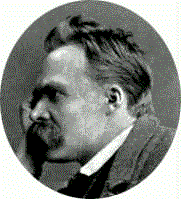OUTLINE:
Title & Subtitle
Summary/Intro
4 points
Conclusion
Remember, you do not need to write the whole paper at once, give some indication of your thesis and basic arguments in class so we can give you feedback before you get into writing your essay. First Draft (points, ideas) should be tested in class discussions.
How to research your paper: Library, Internet.
Questions: ask, or use my e-mail box.
General instructions & requirements for class papers (W):
1) Draw upon the ideas and methods of course readings (or outside readings) and lectures and incorporate them into your research or analysis. It is appropriate and expected that you borrow ideas so long as you cite your sources. See the MLA Handbook for proper format for references. Underline or italicize titles of books, movies, TV shows, journals or magazines, put individual episodes or article titles in quotation marks. Include a bibliography.
2) Be sure your introduction clearly sets out your thesis or
main argument. Make sure your introduction contains a precise,
concise thesis statement. Be sure to signal to the reader in your
introduction exactly what you propose to argue in the main body
of your paper.
Following paragraphs should offer fully developed arguments that support your thesis. Most paragraphs should be at least 4 sentences long. Conclude with a summary of your arguments and a restatement, in different words, of your thesis. Overall, keep you paper focused and develop arguments fully.
3) Avoid vague terms and informal language: "basically," "I
mean," etc. Use of first person pronouns is o.k. but only if it
is done very sparingly. Focus attention on the issues in
question, not on yourself.
4) You will not be judged on your opinions, but on your
arguments. Begin with insights and arguments and support those
with observations and conclusions. Take a stand, challenge
yourself and your readers toward new insights and ideas. A string
of observations does not constitute an academic paper.
5) Demonstrate all the effort, thought and care that went into
writing your paper with a good looking presentation! Double space
with a 12 point, basic font, use one inch margins on all sides,
number your pages and staple your paper. Do not use plastic
covers, folders or paper clips. Cover pages are not necessary for
short papers.
6) Tests in class are based on our reading, viewing and
lectures (terminology).
The topics for your papers will be assigned, the films to be
analyzed are of your preference. There are several main methods
of Film Analysis.
... Film and Movies.
FILM ANALYSIS: HOW TO
[ film.vtheatre.net ]
COMPOSITION: FILM NARRATIVE
First, separate Dramatic & Filmic Structures
Dramatic STRUCTURE
I. SCENE AND EPISODE:
SEGMENTATION: think about how films are put together, specifically about their narrative organization. The primary tool for narrative analysis is the segmentation. Select one of the films from the course as the basis for your first exercise. Prepare a segmentation of that film. Your segmentation should be detailed enough to facilitate a close analysis of the film's narrative structure. Once you have completed your segmentation, write a series of short paragraphs:
1. Briefly describe the basic principles structuring the
film. What do you see as significant patterns emerging from your
analysis?
2. Briefly compare and contrast the film's introduction and
conclusion. What issues get posed in the opening sequences? How
does it build our expectations about the film as a whole? In what
ways does the conclusion respond to the introduction? How
important is it to the filmmaker to provide closure to the film?
3. Select one scene from the film (other than the
introduction and conclusion). Identify it's function(s) within
the film as a whole.
II. DRAMATIC STORYTELLING
NARRATIVE ANALYSIS: Taking your segmentation as a starting
point, write a short (3-5 pages) analytic paper focusing on the
narrative structure of a film from this course. Be sure to cite
to specific points on your segmentation when referencing scenes
in your analysis. ie. (Segment 1 - scene 2, episode A & B). Your
goal should be to combine generalizations about the film's
structure with specific examples drawn from the film. Your essay
should both describe the formal structures operating within the
film and offer some interpretation of why the film is organized
the way that it is. Your explanation might consider issues of
aesthetic norms, genre traditions, authorship, or ideology.
Remember that an analytic essay is making an argument about the
film. It therefore requires an over-riding thesis and a series of
sub-points which make arguments in support of that thesis. For
each sub-point, you need to provide one or more examples which
support your basic claims. You should be as precise as possible
in discussing these examples. Do not assume that they speak for
themselves. Rather, couple your reference to a specific scene
with an interpretation of that scene that proves its relevance to
your argument. You should not be afraid to go over the
recommended page count but your goal should be to combine
precision and conciseness. Please include your segmentation when
you turn in this paper. You should try to account for as much of
the film as possible within your analysis, though you will not,
of course, be able to say all there is to say about the film. I
will be looking for moments in the film which may contradict,
challenge, or complicate your reading. You should anticipate my
objections as far as possible and address them in writing your
essay.
III. VISUAL COMPOSITION
MISE-EN-SCENE: Review the instructions on the last assignment. You are asked to write a short (5 pages) analytic essay focusing on patterns of mise-en-scene within one of the films from the course. You may choose to build upon your analysis from the last paper and continue to work on the same film, but you are encouraged to try your hand on a different film, preferably one which is of a different genre and/or period from the one you choose for the initial assignment. You may choose to narrow your discussion to focus only on acting or lighting or set design or costume or color, though these issues are often closely interwoven. You should look for repeated patterns which shed light on the film's overall formal and thematic development. Your task will be to identify consistent patterns, describe them in technically precise language, and then draw on them as the basis for your analysis and interpretation of the film. Prepare a narrative segmentation to accompany your analysis and cite to it in discussing each scene.
IV. STORY-BOARDING
SHOT BREAKDOWN: Select a 5-7 minute sequence from one of the
films we have seen in the course. Prepare a shot-by-shot
breakdown of that sequence using the terms which we have learned.
Your breakdown should include an indication of the duration of
each shot, the narrative action represented, the camerawork
employed (including a sense of framing, position, and movement).
You will be employing this breakdown as a basis for your next
analytic essay so you should be as precise as possible. Write a
one page abstract of your next analytic essay to accompany the
shot-breakdown.
V. MONTAGE
CAMERAWORK AND EDITING:
Write an essay exploring camerawork and editing in a brief
(5-7 minute) segment from one of the films we have seen in the
course. Your analysis should consider some of the issues
discussed in Eisenstein "FF" chapters. You should consider the
segment's function within the film as a whole. How does the
camerawork and editing here compare to larger strategies in the
film? Is the segment representative of the film as a whole or
does it represent a dramatic break stylistically? If the later,
explain why the director might have chosen a different style for
this segment. If the former, explain why the director chose to
use these techniques for this film. What does the camerawork and
editing contribute to the emotional impact of this sequence? To
the organization of space? Of Time? Of narrative causality? Of
character psychology? Of audience identification?
VI. SOUND TRACK
FILM SOUND: the film soundtrack. The soundtrack consists of
three basic materials -- spoken words, sound effects and music --
which can shape in various ways our emotional response to the
narrative action. As with other elements of style, the soundtrack
may be self-effacing, another aspect of the "invisibility" of the
classical Hollywood cinema, or self-conscious, a source of
excess, a vital element in the formal system. Based on these
readings, develop a paper which addresses the role of the
soundtrack in the cinema. You can confront this problem in
several ways: one approach would be a fairly local analysis of a
specific sequence from a film, such as you did for your
camerawork and editing assignment. You would want to develop a
segmentation based on the soundtrack. You would want to attend
closely to what types of sounds the director employs and what
functions they serve. A second approach would be to prepare a
reading of an individual film, such as you did on your narrative
and mise-en-scene papers. Here, you would look for general
stylistic patterns that run across the work. Another option would
be to develop an argument that involves more than one film,
though here, your claims should be anchored in specific examples
drawn from the films we have seen in this class.
VII. STYLE AND ATMOSPHERE
CLASS PROJECT: During the final weeks we will be working as a critical collective to walk through the single film sequence by sequence, posing questions about the interplay of film style and ideology. As the class discussions draw to a close, we will be dividing our analysis of the film into parts. Each person will be responsible for writing a segment of a larger analysis of the film which is being jointly constructed by the class as a whole.
... other "students" pages.
... teaching directory pages: Anatoly UAF.














 * filmplus.org/kino * picasaweb.google.com/anatoly.antohin * my shared page google
* diggo [ new ] & 2010 AA Ethiopia
* filmplus.org/kino * picasaweb.google.com/anatoly.antohin * my shared page google
* diggo [ new ] & 2010 AA Ethiopia
 vtheatre.net
vtheatre.net


 blog: anatoly-film
blog: anatoly-film

 forums
forums  guests
guests  family
family  glossary
glossary  new
new 

